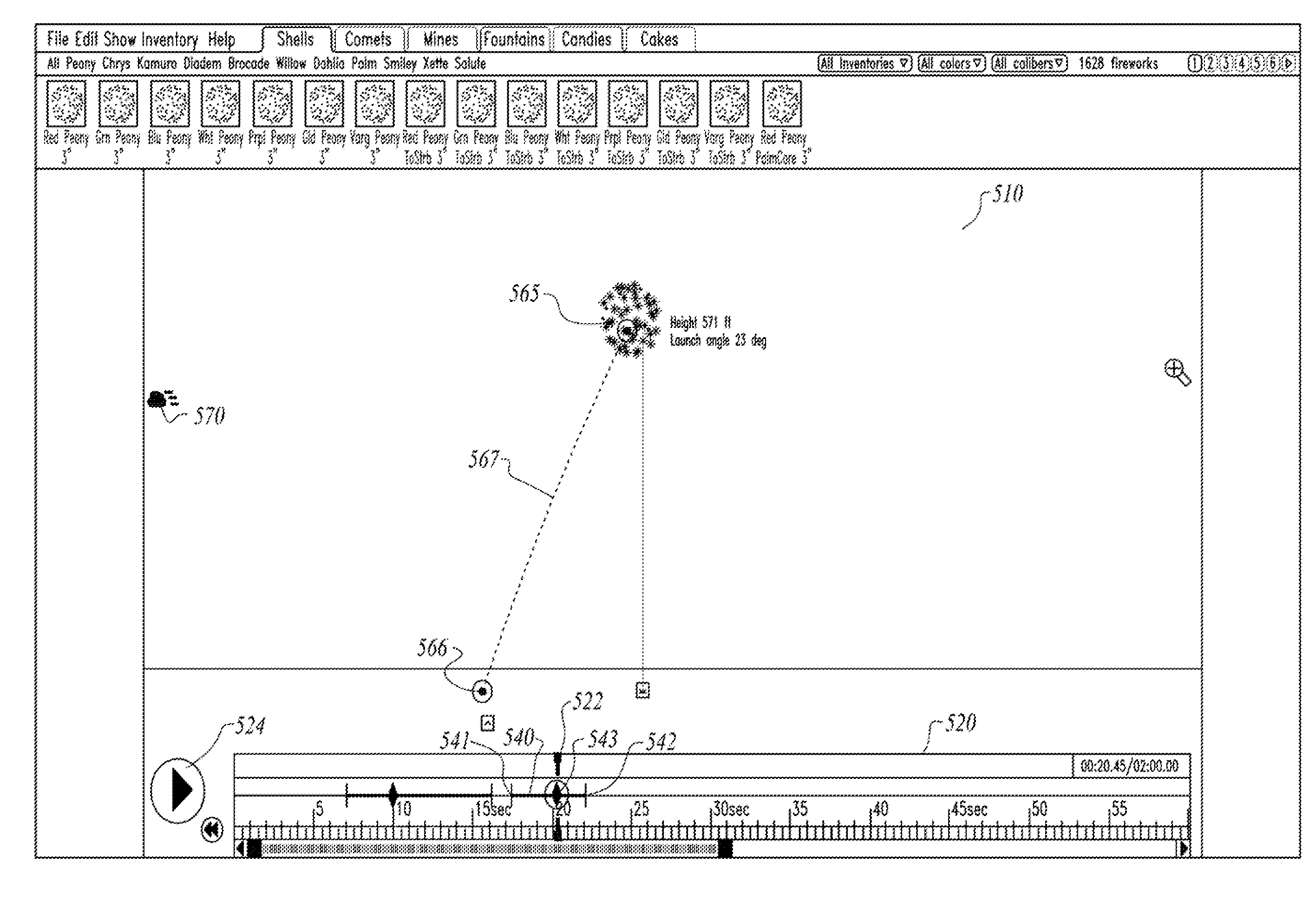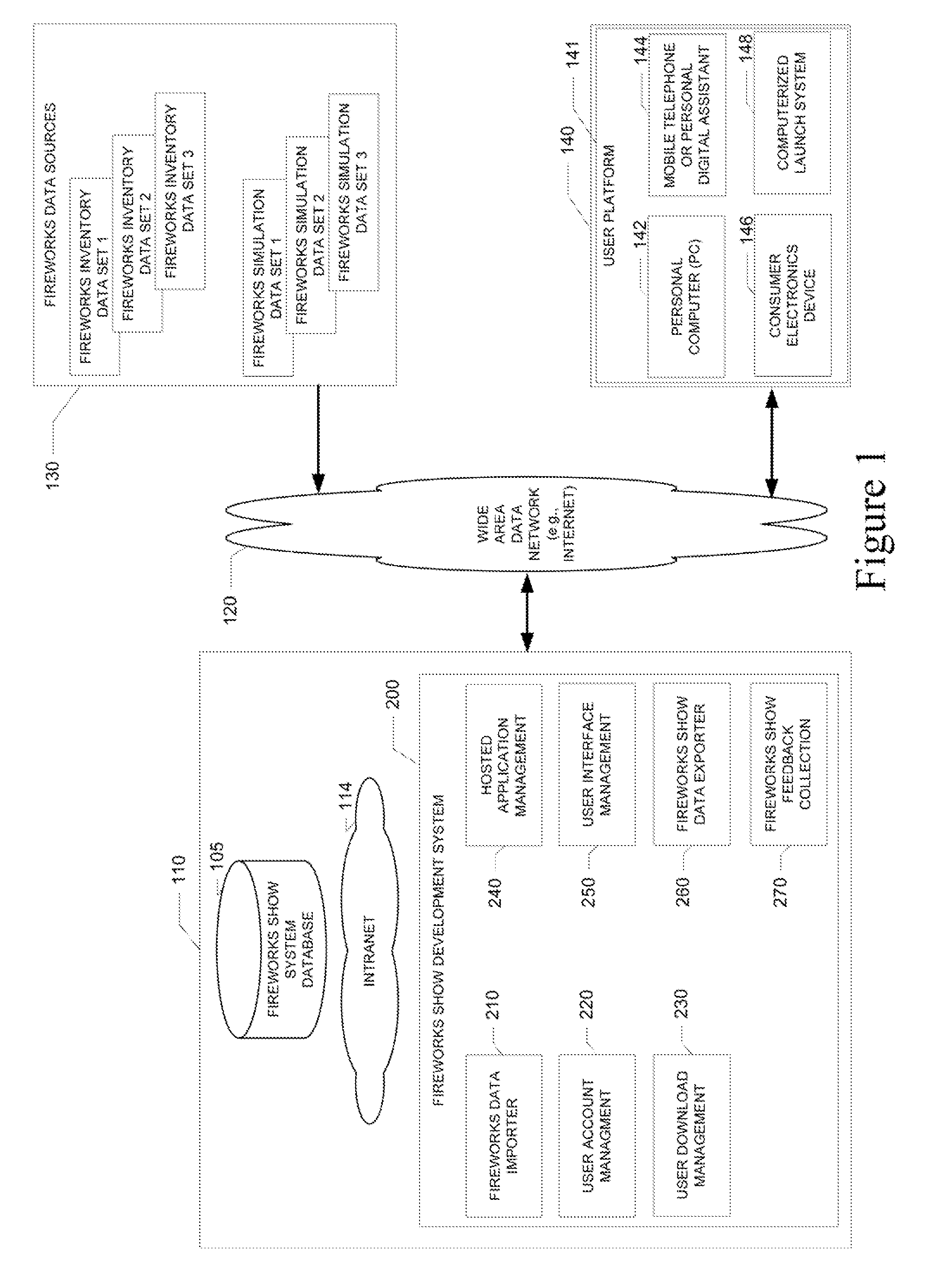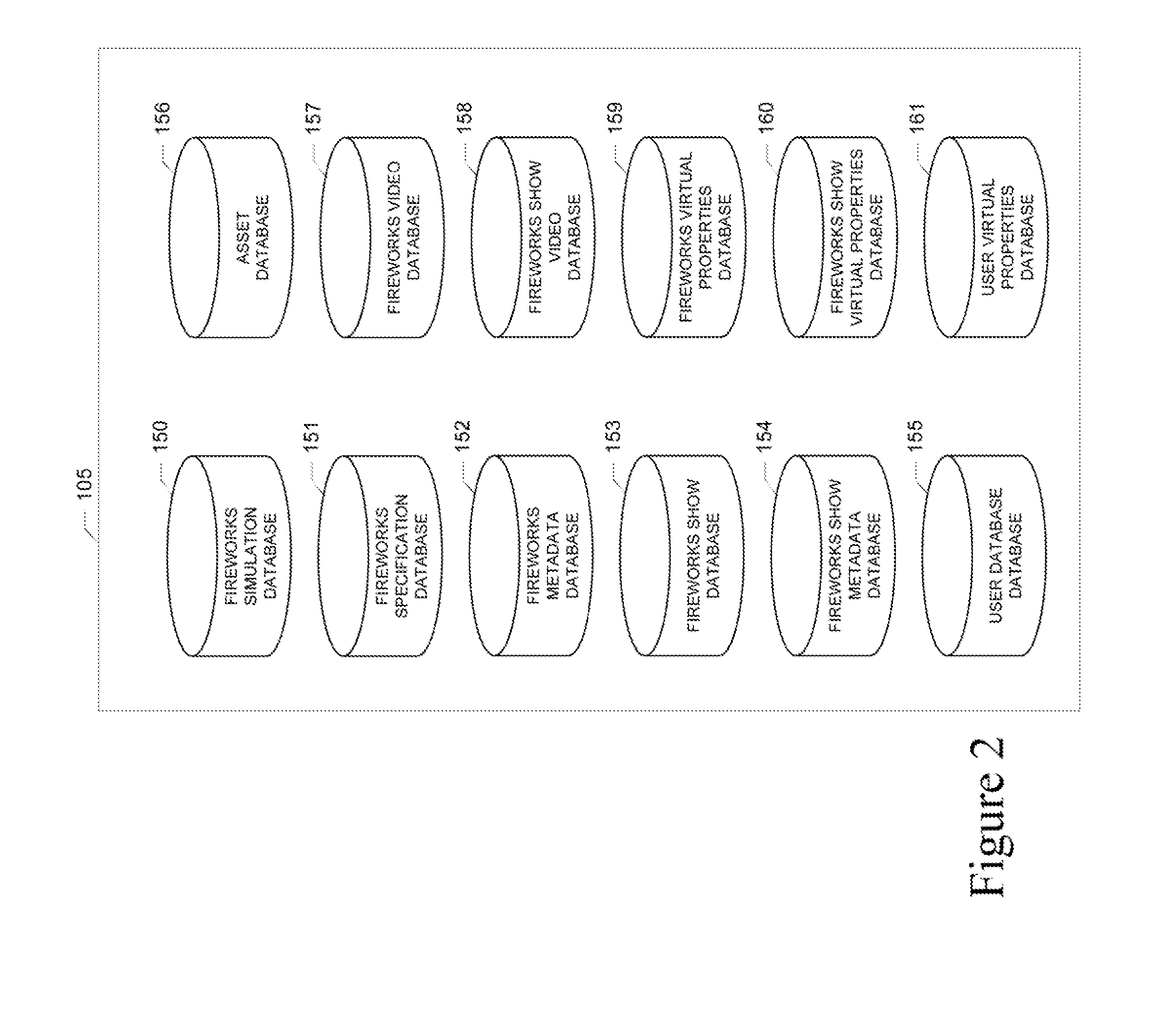System and method for designing and simulating a fireworks show
a computer system and fireworks technology, applied in static indicating devices, analogue processes for specific applications, instruments, etc., can solve the problems of conventional representation, difficult operation of current fireworks show simulators, and laborious work of display operators
- Summary
- Abstract
- Description
- Claims
- Application Information
AI Technical Summary
Benefits of technology
Problems solved by technology
Method used
Image
Examples
Embodiment Construction
[0044]In the following description, for purposes of explanation, numerous specific details are set forth in order to provide a thorough understanding of the various embodiments. It will be evident, however, to one of ordinary skill in the art that the various embodiments may be practiced without these specific details.
[0045]In the various embodiments described herein, a system and method for enabling computer users to design and simulate a fireworks show is disclosed. In various embodiments, a software application program is used to enable the development of a fireworks show and to simulate the effects of the fireworks show on the display screen of a computer system.
[0046]Referring now to FIG. 1, in an example embodiment, a system for enabling computer users to design and simulate a fireworks show is disclosed. In various example embodiments, an application or service, typically provided by or operating on a host site (e.g., a website) 110, is provided to simplify and facilitate the...
PUM
 Login to View More
Login to View More Abstract
Description
Claims
Application Information
 Login to View More
Login to View More - R&D
- Intellectual Property
- Life Sciences
- Materials
- Tech Scout
- Unparalleled Data Quality
- Higher Quality Content
- 60% Fewer Hallucinations
Browse by: Latest US Patents, China's latest patents, Technical Efficacy Thesaurus, Application Domain, Technology Topic, Popular Technical Reports.
© 2025 PatSnap. All rights reserved.Legal|Privacy policy|Modern Slavery Act Transparency Statement|Sitemap|About US| Contact US: help@patsnap.com



